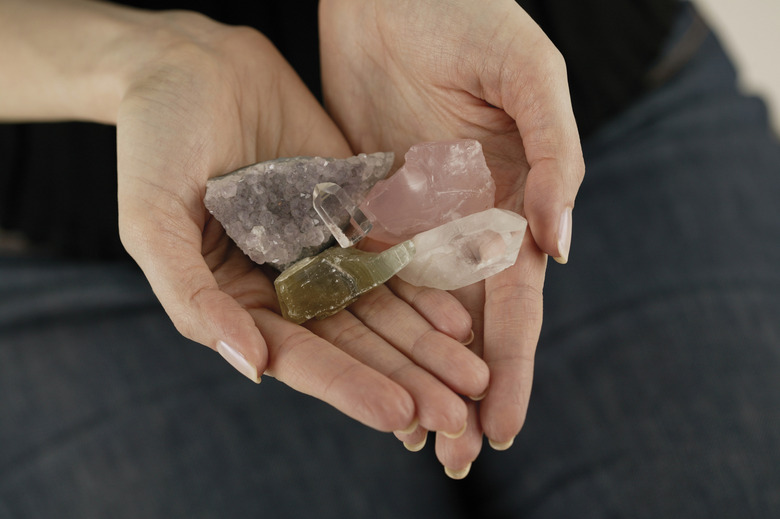Learning About Crystals For Kids
Learning about crystals involves both science and math. Kids can go outside for a nature hike or experiment with basic household items to learn about crystals once they have a basic understanding of what makes up a crystalline structure. To help with the study of crystals, you may need to have a magnifying glass or a child's microscope to get a better look at the structure.
What Are Crystals?
What Are Crystals?
Crystals represent nature's organization. When atoms come together in an organized manner with a repeating pattern, it's considered a crystal. This results in a substance with a flat outer surface that has a geometric pattern, explains "What's That Rock or Mineral? A Beginner's Guide." They can be found in a variety of shapes, including orthorhombic, tetragonal, isometric, monoclinic, hexagonal, cubic and triclinic. One example of a crystal structure is a snowflake. When viewed under a microscope each snowflake looks different, but they all resemble a star with six distinct points.
Finding Natural Crystals
Finding Natural Crystals
All minerals and ice — along with snowflakes — are crystalline structures. You can take the kids outside for a scavenger hunt to find these crystals in nature. Some common crystals you may find on a hike include quartz, which forms in several colors, including milky white and pink; olivine, which is green; and magnetite, which is black. Even if you can't identify the type of rock you find, by looking closely at its outer structure you can often determine whether it is a crystal. The surface will usually have obvious repeating geometric shapes. An exception would be minerals that have been in rivers or streams, where the current makes the surface of rocks smooth and rounded.
Making Your Own Crystals
Making Your Own Crystals
Evaporation creates many crystals, and this is something you illustrate in your own kitchen. To make a crystal at home, fill a glass jar with 3 cups of hot water. Mix in 3 tablespoons of borax to the hot water and stir until it has all dissolved. With pipe cleaners, make a shape such as a star and tie a 12-inch piece of yarn to the star. Put the star into the solution and let it sit for at least 24 hours. Leave the other end of the yarn dangling outside the jar. Within 24 hours, crystals will start to form on the pipe cleaner. The longer you leave it, the bigger the crystals will grow.
Making Crystal Shapes
Making Crystal Shapes
Another educational crystal lesson for kids is to build the basic shapes that form crystals. An easy way to do this is to use straws and tape. Cut the straws to various lengths. Then connect the pieces with tape to make 3-D shapes that form crystals, such as a hexagonal or isometric. If you make several 3-D shapes, you can then connect those to build your own crystal.
References
- "Super Science Concotions"; Jill Frankel Hauser; 2007
- Ducksters: Crystals
- Greentown Gem Rock Museum: What Are Crystals?
- "What's that Rock of Minera? A Beginner's Guide"; Tom Jackson; 2014
Cite This Article
MLA
Anders, Lynn. "Learning About Crystals For Kids" sciencing.com, https://www.sciencing.com/learning-crystals-kids-5255258/. 24 April 2017.
APA
Anders, Lynn. (2017, April 24). Learning About Crystals For Kids. sciencing.com. Retrieved from https://www.sciencing.com/learning-crystals-kids-5255258/
Chicago
Anders, Lynn. Learning About Crystals For Kids last modified March 24, 2022. https://www.sciencing.com/learning-crystals-kids-5255258/
